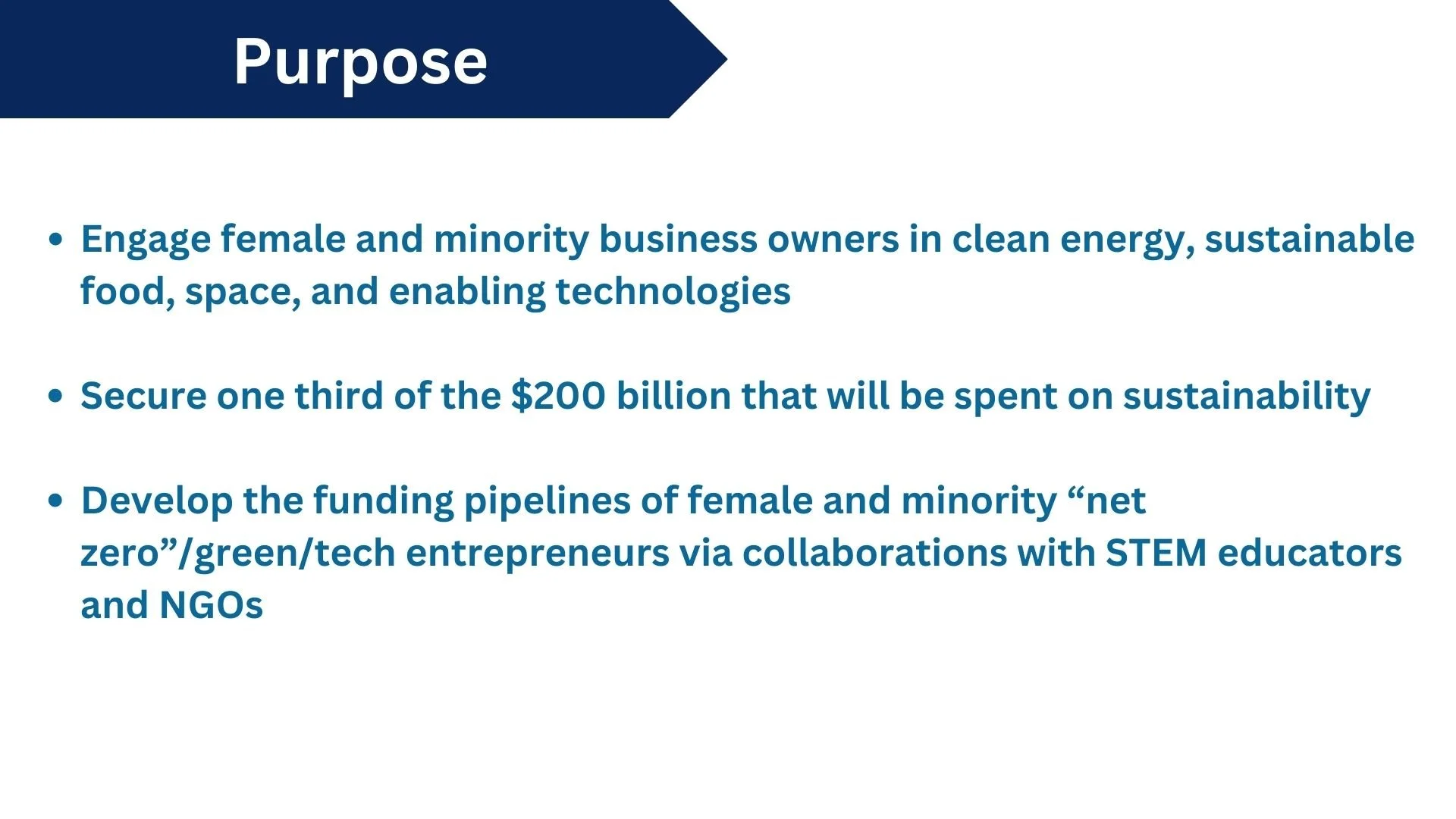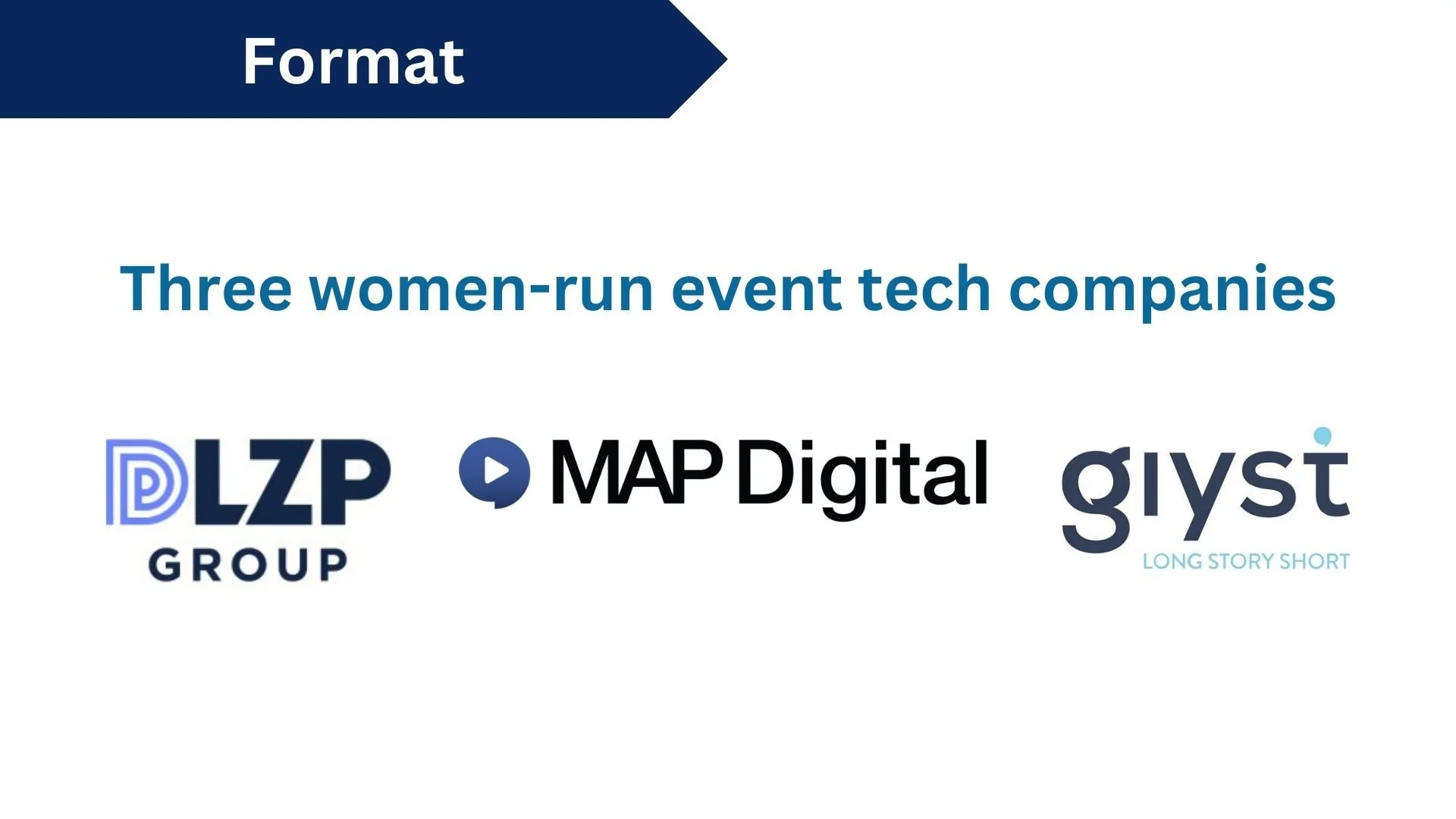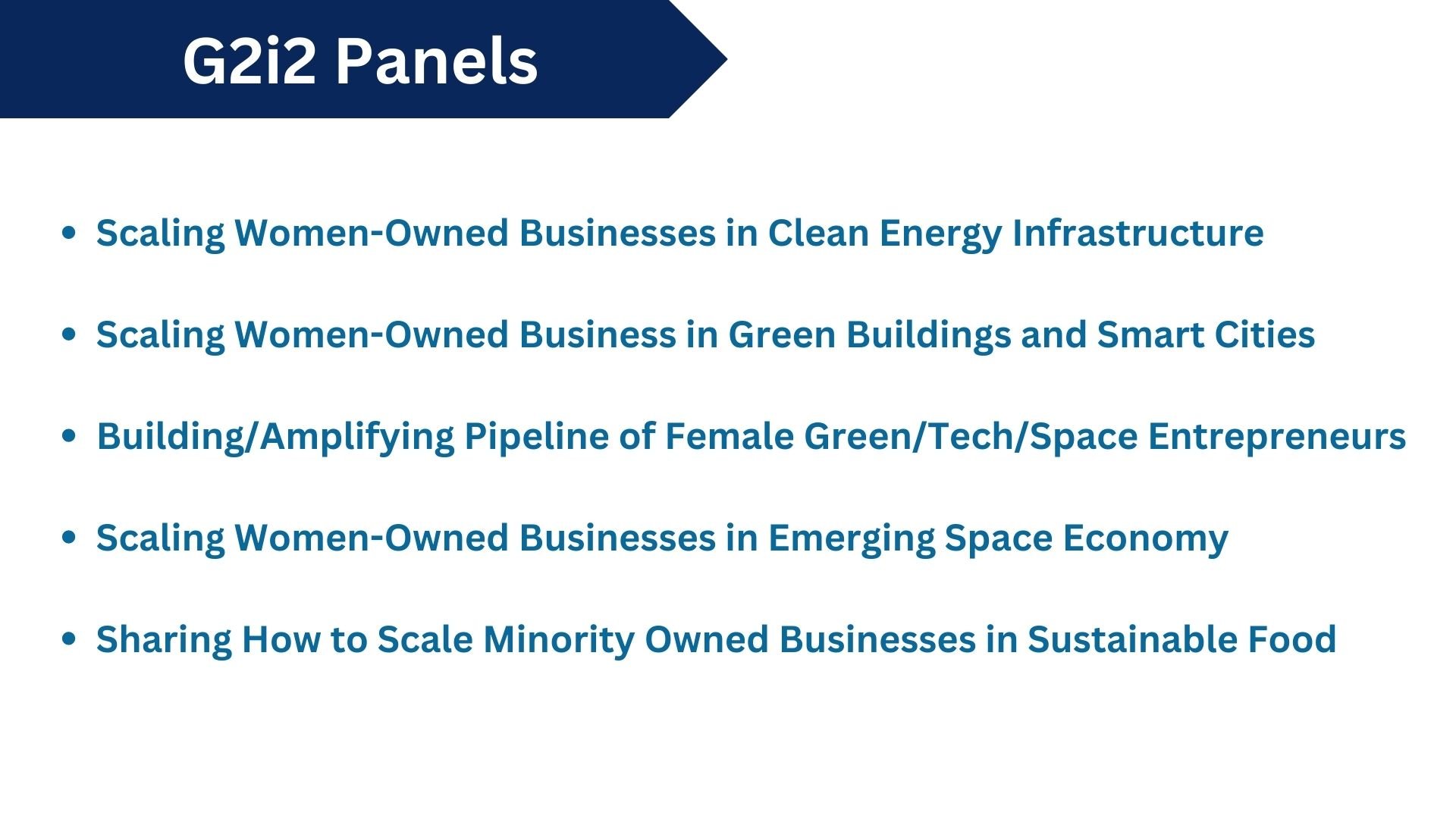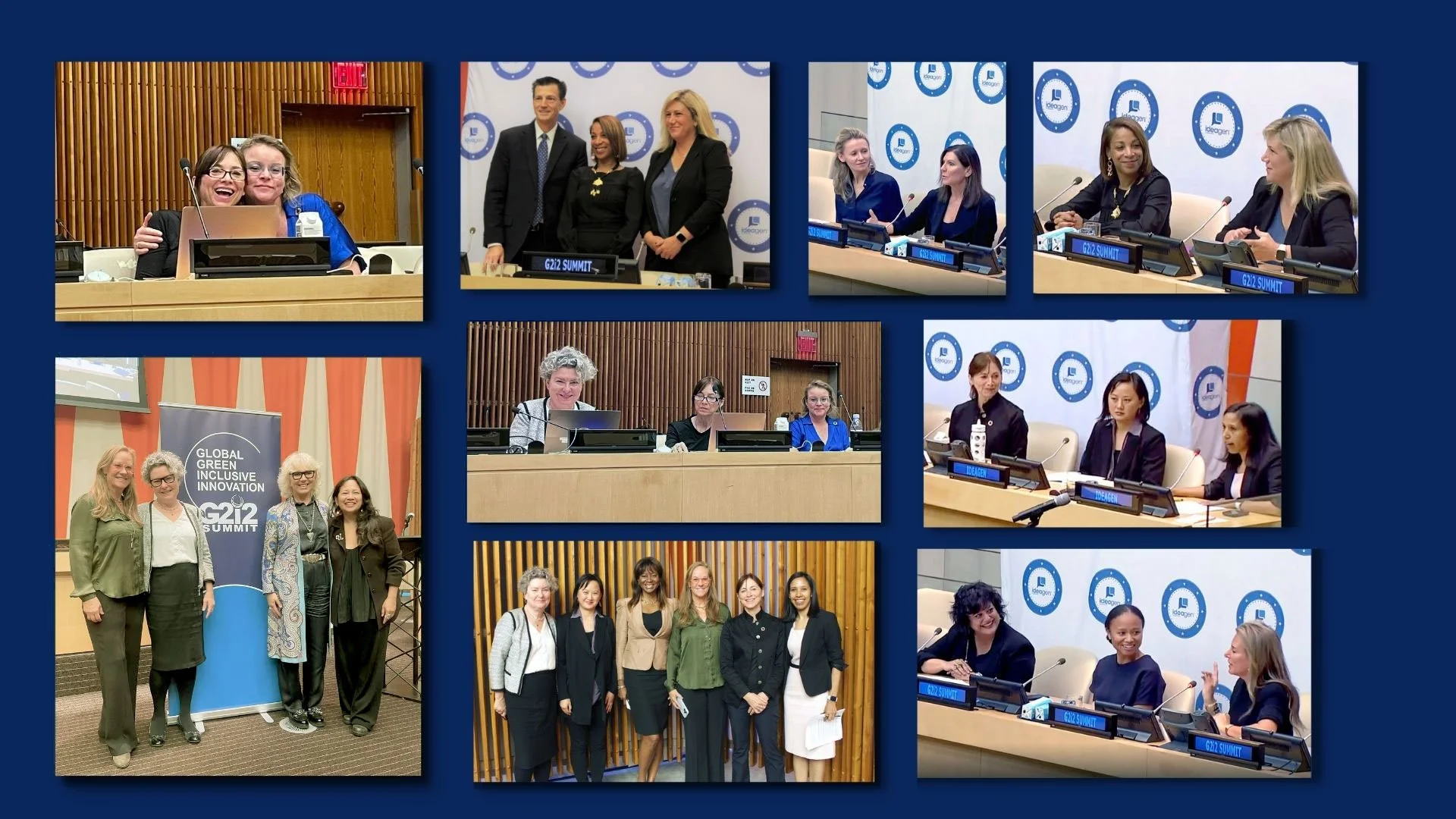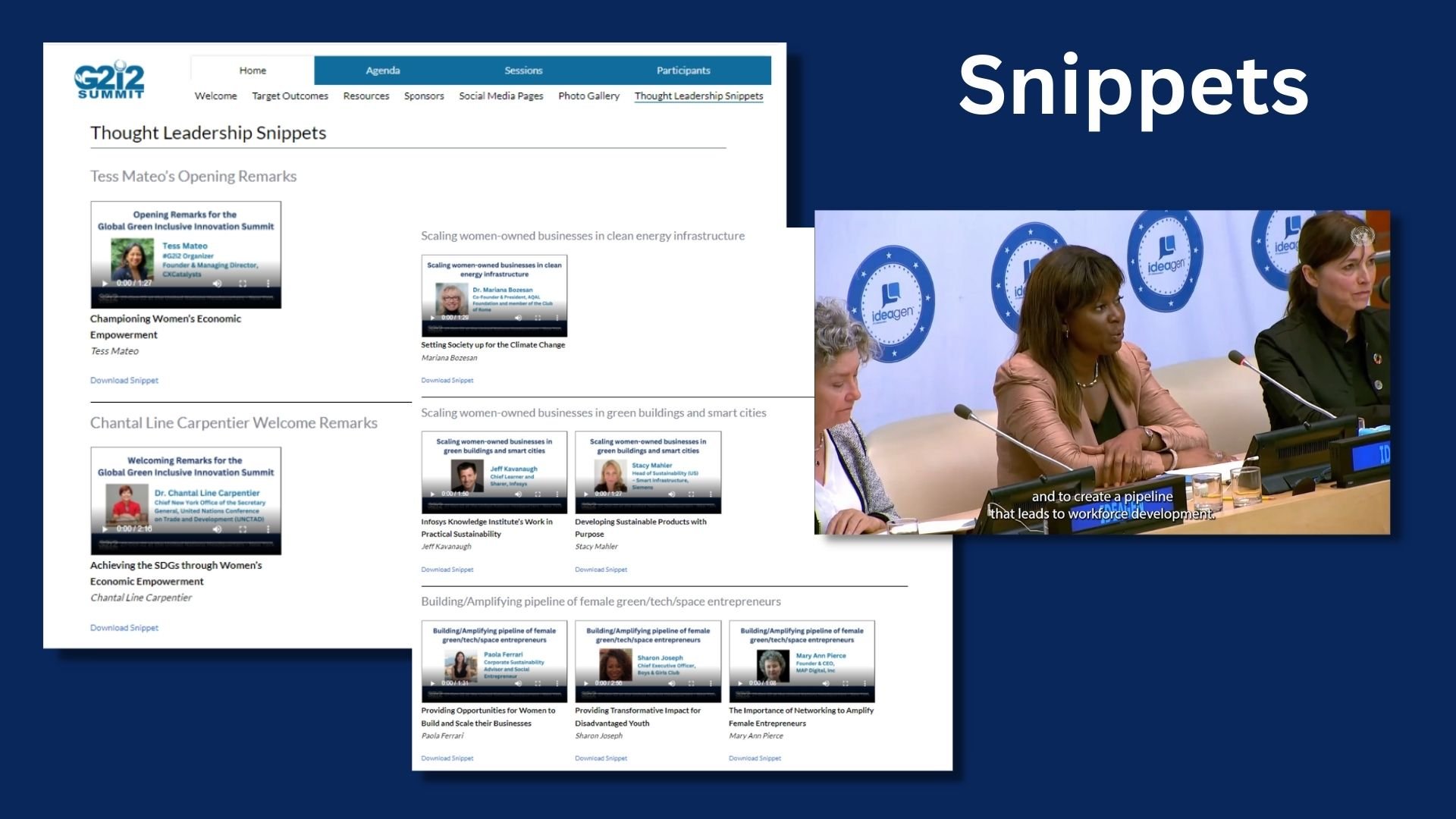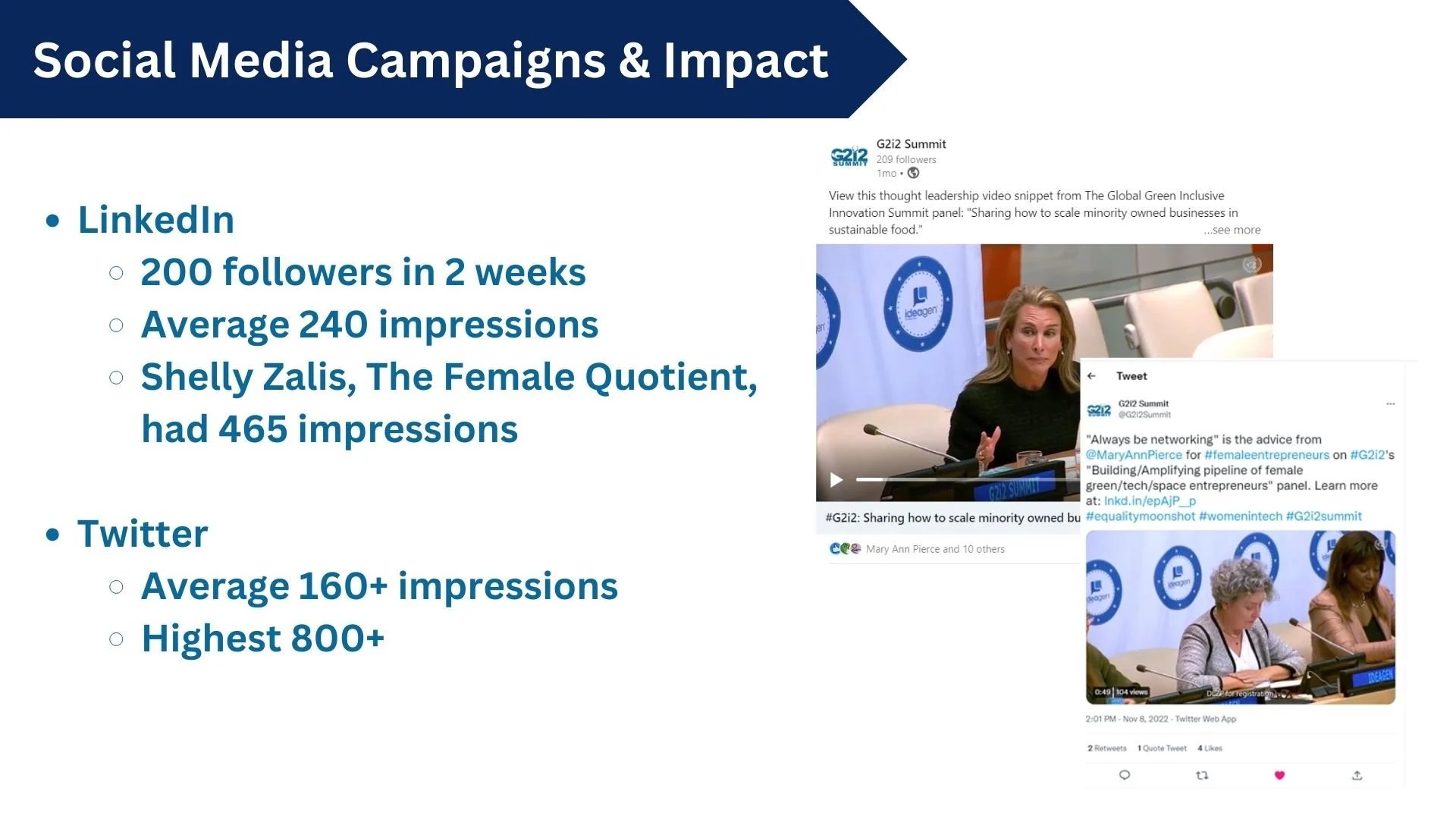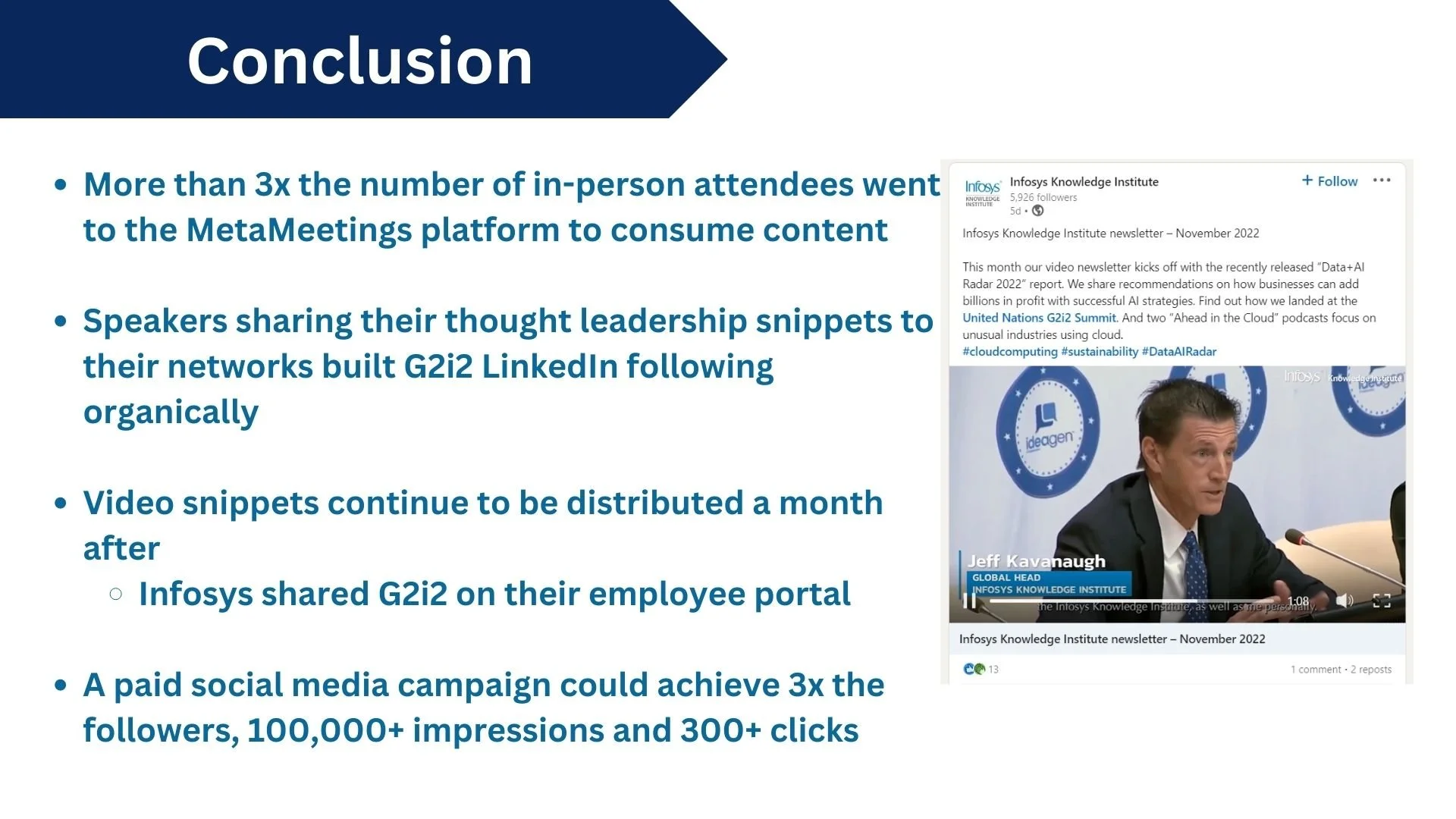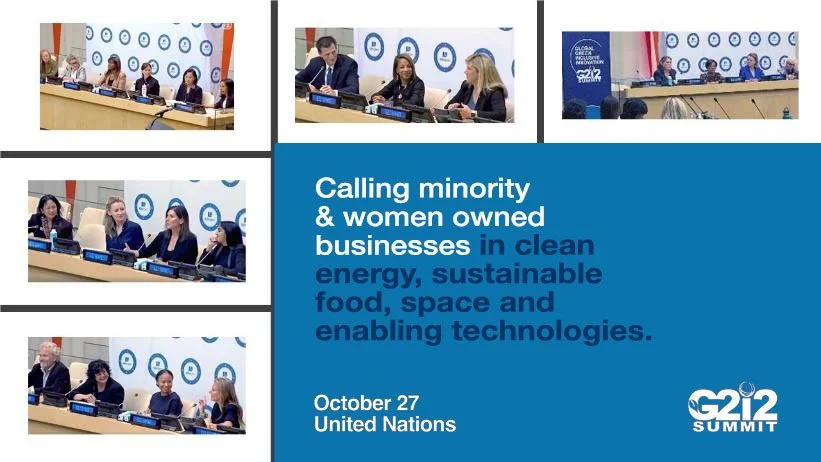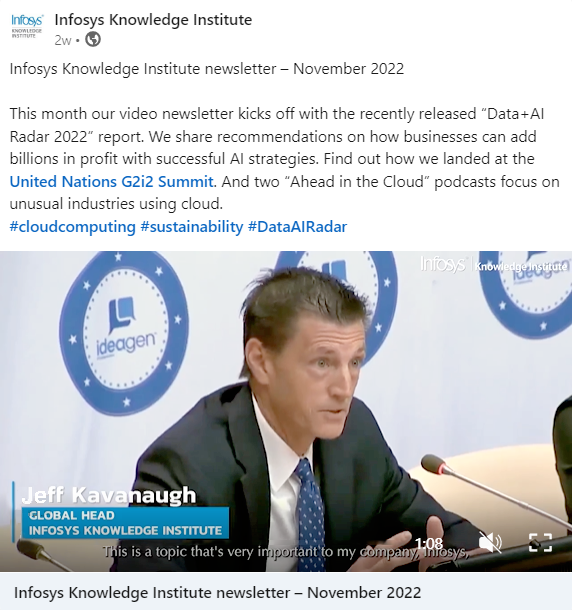Case Study: The Global Green Inclusive Innovation Summit
Building an online community with thought leadership video snippets
The Global Green Inclusive Innovation (G2i2) Summit was held at the United Nations headquarters in New York City on October 27, 2022. Inspired by two top priorities from the 2018 Transformation is Feasible Club of Rome Report – accelerating clean energy transition and sustainable food chain productivity – the Summit convened businesses, funders, investors, governments, non-governmental organizations (NGOs), and academia to connect their sustainability, net-zero and diversity, equity and inclusion initiatives and commitments. The G2i2 Summit exponential collective action to reduce greenhouse gas emissions (GHG) and narrow gender inequalities by actively seeking that minority and women-owned businesses secure one third of the $200 billion that will be spent to achieve sustainability.
The G2i2 Summit set out to match minority and women-owned businesses to public and private sector opportunities, funders, and investors. The summit amplified success stories of minority and women-owned businesses, shared best practices of how corporations and governments can assist these businesses, raised awareness among NGOs serving female and minority entrepreneurs of high-growth green transition opportunities, and developed pipelines of female and minority net zero, green and tech entrepreneurs via collaborators with STEM educators and NGOs.
The event opened with remarks from Tess Mateo, founder and managing director of CXCatalysts, and Dr. Chantal Line Carpentier, Chief, New York Office of the Secretary General of United Nations Conference on Trade and Development (UNCTAD). Following the opening remarks, the audience heard panels focused on:
Scaling Women-Owned Businesses in Clean Energy Infrastructure.
Scaling Women-Owned Business in Green Buildings and Smart Cities
Building/Amplifying Pipeline of Female Green/Tech/Space Entrepreneurs
Scaling Women-Owned Businesses in Emerging Space Economy
Sharing How to Scale Minority Owned Businesses in Sustainable Food

Social Media Campaigns and Impact
The social media amplification of the thought leadership connected to the 2022 G2i2 Summit was a rousing success. Two weeks after the summit, the newly created G2i2 LinkedIn account had 200 followers. The growth was entirely organic, as there was no budget allocated for paid social.
G2i2 video snippets, some generated by Giyst, averaged 240 impressions. 465 impressions, the best performing post was Shelley Zalis’s “Sharing how to scale minority owned business in sustainable food.” Shelly has 51,459 followers on LinkedIn, so G2i2 realized a significant lift because of her The Female Quotient network. This suggests that the G2i2 video snippet content was compelling enough for viewers to engage with because they shared it within their networks, commented on it, “Liked” it, or became followers of G2i2 LinkedIn page. Also, ninety of them went to the G2i2 MetaMeetings website to consume more content.
In terms of overall impressions, engagement, and profile visits, the G2i2 Twitter account was also a productive platform for the Summit. The tweet below had 800+ organic impressions. Overall, G2i2’s tweets averaged 160+ impressions per post and compelled more than 50 users to visit the profile page to learn more about G2i2. However, less than ten users follow the account. In terms of engagement, Facebook and Instagram were less impressive than LinkedIn and Twitter, but it is harder to post organically, without paid campaigns, on Instagram and Facebook.
G2i2 Summit ran on three women-owned platforms
In keeping with the mandate to secure contracts to minority and women-owned suppliers, three women-owned tech companies managed the G2i2 Summit. DLZP Group managed registration of attendees and speakers. MAP Digital, Inc used their MetaMeetings platform to capture the UNTV live stream and hosted the Summit’s agenda, speaker profiles, white papers, on-demand session recordings, and photo gallery. Finally, Giyst, a machine learning platform, generated some of the video snippets in the G2i2 social media campaigns conducted by MAP Digital.
Conclusion
The G2i2 Summit was successful in terms of social media amplification even without a paid campaign because it leveraged the speakers’ networks in posting their thought leadership snippets. This success is also confirmed by the fact that G2i2 content continues to be distributed via social media by speakers over a month after the live event as in the case of Infosys Knowledge Institute and over 90 unique users have logged into G2i2 MetaMeetings website to access the conference content.
For future G2i2 Summits deploying a paid social media ad campaign would double or triple the number of followers gained across social media. Additionally, using boosted posts on LinkedIn with a suggested budget of $1,000.00 per week for a month and targeting specific demographics would have the potential of reaching 100,000+ impressions and 300+ clicks by users to learn more. Pre-event marketing would have encouraged attendance at the UN and for online audience to follow live social media posts during the event or engage in the live streaming either from the G2i2 MetaMeetings website or LinkedIn page, and view and share the on-demand sessions, presentations, and reports after the summit.
We learned from the G2i2 content marketing campaign; the amplification of thought leadership video snippets is a very effective tool in building communities to make transformation feasible.
To learn more about the Global Green Inclusive Innovation 2022 Summit and to view video content and presentations from the event, visit the G2i2 MetaMeetings website.


